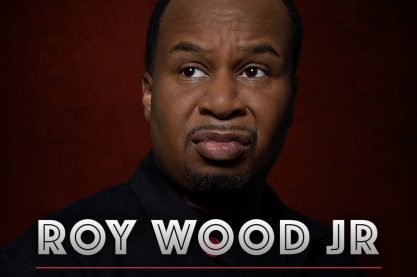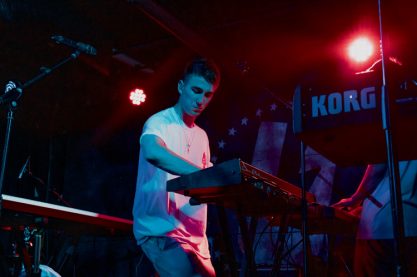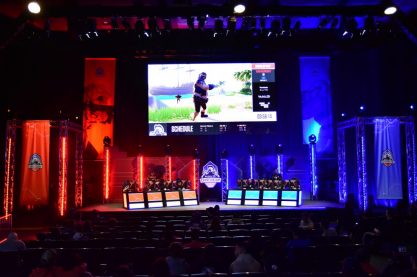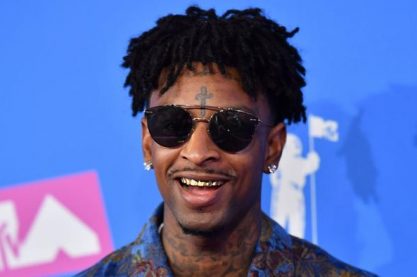Design
INTERVIEW: Cey Adams, founding Creative Director at Def Jam Recordings
[caption id="attachment_44410" align="aligncenter" width="450" caption="Cey Adams (Photo © Mike Schreiber)"]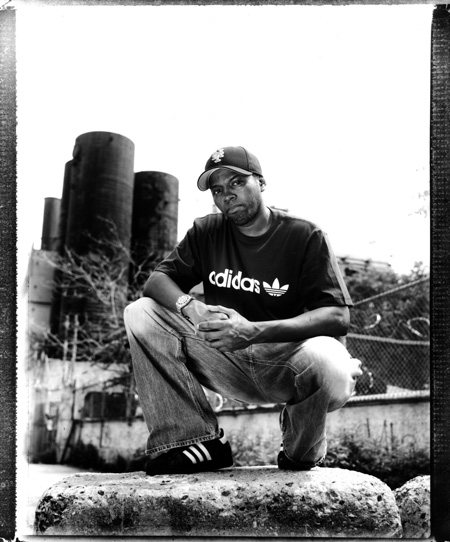 [/caption]
[/caption]
Graffiti artist, painter, communications designer, teacher are just some of the titles that cover Cey Adams’ broad experiences. From 1983 to 2000 he was the creative director at Def Jam Recordings. If you bought vinyl, tapes, or CDs with a Def Jam logo on it from artists like the Beastie Boys, Run DMC, Public Enemy, De La Soul, Jay-Z, LL Cool J, as well as comedians Chris Rock, and Dave Chappelle, among others, you may have seen his work.
For the lead up to the Def Jam 25 anniversary event in DC on May 12th, I had the pleasure of having a conversation with Cey to talk about his roots as an artist, his process, how he came to his position at Def Jam, and the importance of history for the creative process.
Couch Sessions: How did you get your start as a graffiti artist and what attracted you to the art form?
Cey Adams: I got my start writing graffiti when I was literally a kid in grade school. You have to understand that this is pre hip hop. Before all the different forms came together. So there was really no word for it. Graffiti artists were doing graffiti, break dancers were breaking, rappers were MCing, and DJs were [playing records], and that was before the whole movement came together to form a culture.
CS: What kind of stuff were you doing. Tags, 3 dimensional objects..?
CA: I’ve been an artist my whole life. When I got involved in graffiti it was an extension of sign painting. You’re probably too young to remember but once upon a time before the way we do things today digitally, everything was done by hand. That was the thing that attracted me to it. That it was like sign painting and hand lettering. But like most early writers I did it all. You know, tagging… then you stepped up with larger and larger pieces… then doing subways.
CS: Was Russell Simmons aware of your work as a graffiti artist or was it a chance encounter when you first met?
CA: That’s all I was doing at the time. When I met Russell it was 1983, I was looking to make the transition out of graffiti. This was when the downtown scene was changing. I had sold a couple of paintings. Keith Haring’s career was just kind of starting, and there was Jean Michel [Basquiat]. I was looking to make the transition into selling paintings but that scene was short lived. When that stared to fade I met Russell, at that very same time, and it started out as an opportunity to do design instead of fine art.
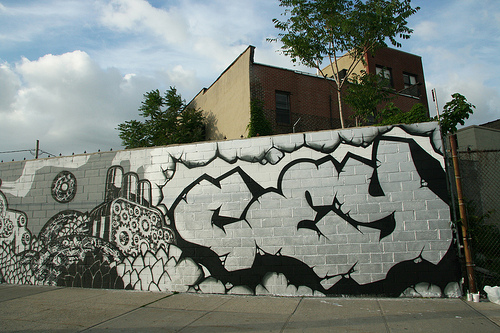
CS: I saw an interview that read as if your first meeting with Russell was a chance encounter. Was the photographer that introduced you to him seeking your work or scouting locations?
CA: No he was just seeking locations. He didn’t know who I was and I didn’t know who he was. It’s funny we were just reunited. We did a show together at Rush’s gallery.
CS: I was at that show. Who was that photographer?
CA: His name is Talib Haqq. But back then he went as Butch Greene. So if you look at the first Run DMC album cover, that was the stuff he was shooting the day he met me. He was the guy who introduced me to Russell. Not literally. He gave me his business card and I went down to meet [Russell].
CS: So you meet Russell, you do some work for him. When did the idea of creating the creative agency The Drawing Board come about?
CA: That wasn’t until years later. It was about 1986. There was about three years where I designed posters, flyers, t-shirts, stage backdrops. Literally everything that was visual I was responsible for.

CS: I went to art school when Photoshop, Illustrator and all of the computer programs we all use were just coming into play. Has technology changed your process?
CA: Yes it has. But more than anything I’ve learned that you have to stay current. It doesn’t make what I do better. It just makes it in some cases easier. Technology is an amazing thing. One of the ways it’s changed a lot is it has given us an opportunity to show people what we do a little bit quicker. It was a very difficult thing trying to show people art. You had to show them a sketch with over lays, you had to imagine what the colors would look like. And for people that couldn’t visualize, that could be quite confusing. Now I get an idea, I can shoot someone a PDF, and they understand exactly what I’m talking about
CS: You can get an idea to someone that they can understand, fine tune it, and keep the process going.
CA: Yup
CS: Having paved the way for many of us and future generations of young artists, are you involved in mentorships or education programs?
CA: Aaaall the time. I just got off the phone with the High Museum in Atlanta and I’m going to be doing a residency there teaching art to young students from their permanent collection. I travel all over the world to lecture and teach kids from grade school through college. I also teach at the Brooklyn Academy of Music here in New York. That’s one of the things that’s really important to me because I think that after all these years that’s the one thing I really do have to offer aside from the work itself - the education about the journey, about how different things are today. But the thing that remains the same is that people really have to value their history.
CS: What are you listening to now? Even outside of hip hop.
CA: I love what Adele is doing because it kind of [takes] me back to a different time. I loved Amy Winehouse. I like B.o.B. because it’s kind of an extension of where Kanye West comes from. I like stuff that reminds me of an earlier time, people that have respect, like I said before, for history. the Beastie Boys were inducted into The Rock & Roll Hall of Fame few weeks ago and I was lucky enough to go to Cleveland with them and got to meet a lot of my music heroes. People like Carole King, Alice Cooper, and the great Grandmaster Flash. Not that I haven’t met Flash, I’ve known him for years, but I still get excited every time I see him.
[caption id="attachment_44413" align="aligncenter" width="546" caption="Cey & Adam Yauch (Photo © Ray Tamara)"]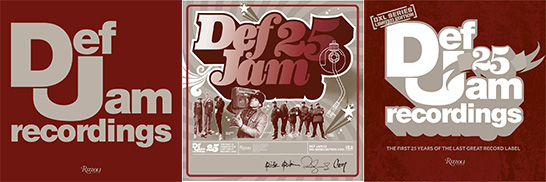
CS: It’s interesting that you have such broad tastes in music. From Carole King to the Beastie Boys.
CA: When I grew up radio wasn’t segregated like it is now. You could listen to all those things in one station. I just heard Grandmaster Caz talk about this on the new Ice-T documentary. How it’s really unfortunate that this is the way kids are brought up today. They don’t understand how great of an advantage you have when you do listen to other kinds of music.
CS: Yup. How else do you get the great samples or ideas when you don’t listen to other kinds of music?
CA: The answer is you don’t. Good producers have big ears. If they think that Dr. Dre and Pete Rock and the great musicians coming up today don’t listen to different types of music they’re absolutely wrong. That’s one of things that I try to stress. That having a broad range doesn’t mean that you’re square, or corny, or anything else. All it means is that you’re well informed.
Join Cey Adams, Bill Adler, EPMD and more at the Def Jam 25th Anniversary Celebration at the Lincoln Theatre in Washington DC on June 16th. Tickets are available here.
The “Def Jam Recordings: The First 25 Years of the Last Great Record Label” book is available on Amazon and book stores everywhere.
For more info on Cey Adams: Website | Twitter
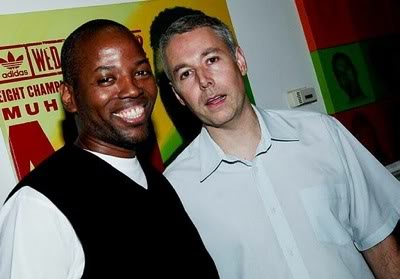 [/caption]
[/caption]
RIP Emcee, Director and Philanthropist Adam “MCA” Yauch. Your legacy lives on Sir Nathanial Hörnblowér!
